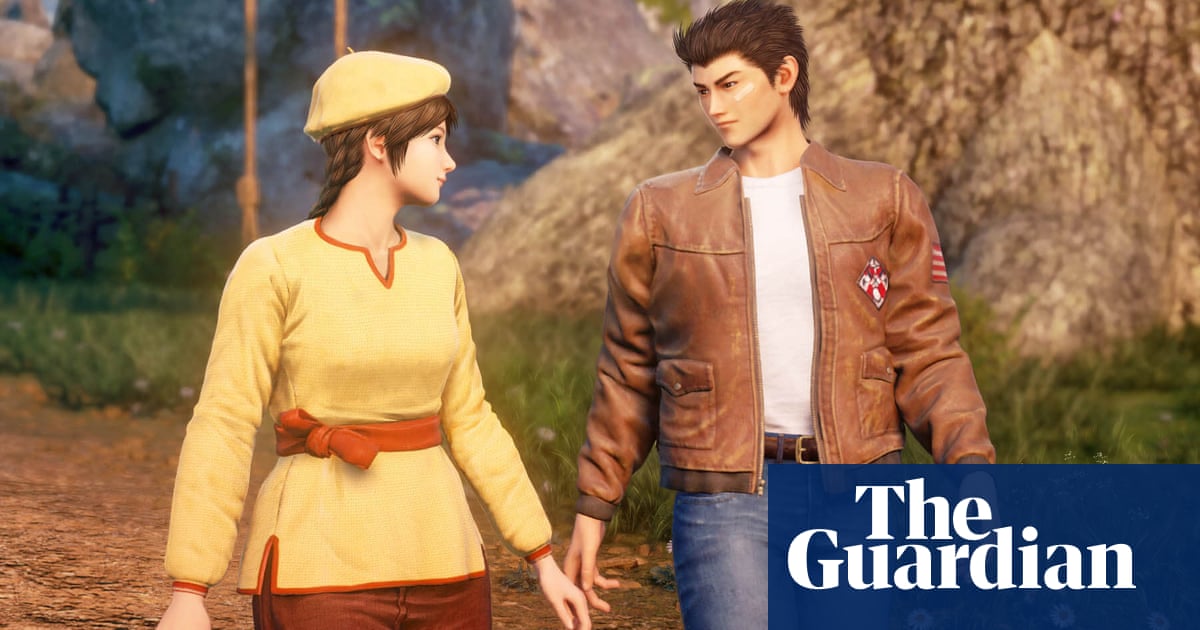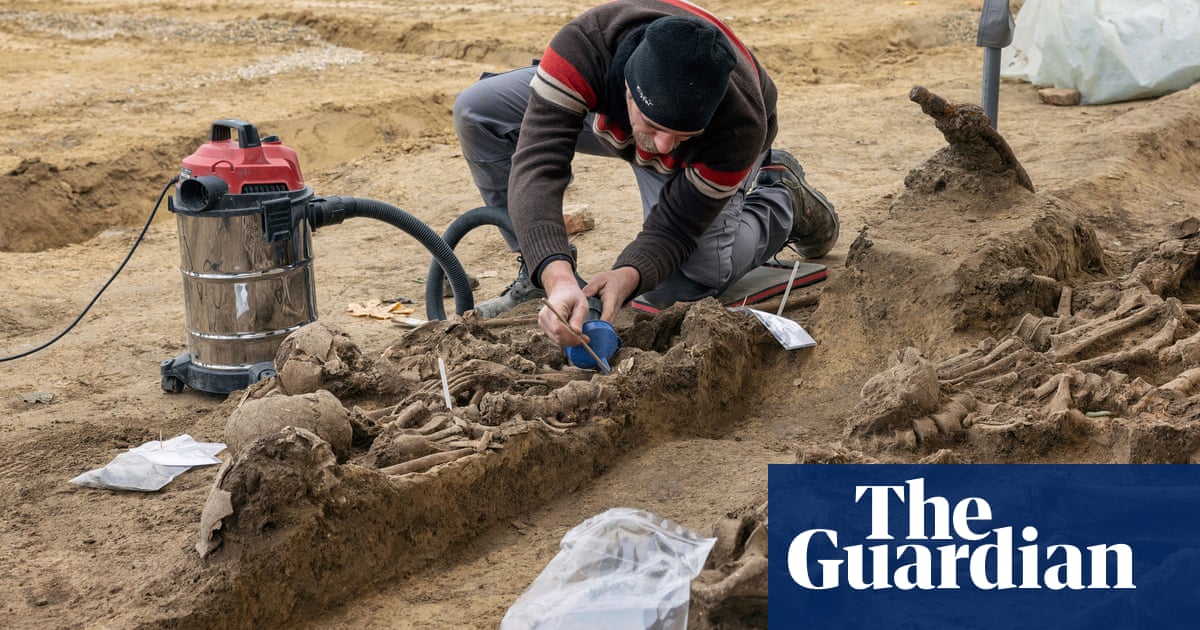Filled with laughter and pain, and bodies that cry and moan, suffer and sing, Ed Atkins’ exhibition at Tate Britain is populated by the unreal and the simulated, the present and the absent, the living and the dead. We go from light to dark and back again, from room to room, and constant shifts in tempo and register, swerving from one medium to another. Along the way, we keep meeting the artist. Atkins drawn in coloured pencil, pensive in profile. Atkins as half-man, half-spider, splayed across the paper. Here’s his naked foot, drawn monstrously huge, and a hand clenching. He’s the author of his own descriptive wall texts, a collector of lists and, most pungently of all, the digitally tweaked persona who appears and reappears in the various guises of his CGI-avatar. One of which, early on in the exhibition, is swallowed by a sinkhole, along with his Ikea-filled apartment, but not before we have discovered rather too much about the state of his mind and the grim things people get up to in the privacy of their homes.
There’s so much stuff in Atkins’s art, so much weirdness and generosity, so much bleakness and humour. A curtain opens on an empty stage and things begin to fall from above. A bed, stepladders, books, cardboard boxes, an anchor on its chain, bricks, several large tuna, bones, scatter cushions, skulls. Things pile up, they bounce, they get crushed; other things twirl in freefall, freeze mid-air or swipe into digital oblivion. Even gravity has glitches. But the cartoon rain, the flashes of lightning and the fall of pixelated snow keep the action moving. As I watch, I hear a spooky voice say: “My proper name is death.”
Where did that come from? I never did find out, in the hours and hours I spent here, among all the sound leakage, drifting from room to room. A lot gets subsumed along the way through Atkins’ exhibition. The pleading, reproachful eyes of a borzoi sighthound; the plaintive unaccompanied renditions of Randy Newman songs, and all that kerfuffling and crashing, the film about the sandwiches, and the quiet, nearly blank fields of the embroideries, with their tiny sewn words. And what of the young lad who runs endless circuits through a bucolic landscape, as though he’s trapped in an animated medieval manuscript? And now the 468 repetitions of the same note that Atkins plays on an upright piano, in his performance of Swiss composer Jürg Frey’s 2001 composition Klavierstück 2. It all adds up, but to what?
Encumbered by a Lycra motion-capture suit and gloves, and with an iPhone braced to his head to record and track his face and hands, Atkins sat at the piano to perform Frey’s spare, exacting composition. The version of Atkins on the screen, performing, is a largely faithful, nearly seemless digital representation of the artist. Homing in on his face, on fingers playing and lingering above the keyboard, on feet at the pedal, on his expression and his concentration, we see none of the gubbins that were used to record him. We hear his breaths and snufflings and quiet groans along with the music, and think we perceive the turbulence of the player’s emotions, and catch him counting time, although the being at the piano is a digital model, a not-quite-real apparition, in whose expression I imagine I see feeling. As the end credits scroll, we read that Atkins finished making this video “in great sadness”. His expression, in the small photograph that slides down the screen beneath the text seems to confirm this. But where and to whom or to what does that sadness belong, and is my own sadness, as a response to the music, or at least to the video, appropriate?

Here he is again, talking to his mother on the phone. Their conversation is real enough, intimate and warm, though at odds with the slightly soiled, avuncular gameshow host appearance of the Ed Atkins projected before us (note the grubby spectacles, and the meaty hand that raises a glass that isn’t there to his lips). The scene is projected on to the exterior back wall of a cavernous and empty plywood box that fills most of the gallery. This guy’s an off-the-shelf digital stand-in for Atkins. Only his voice seems real. Another of the models for this scene, and for the entirely digital set (including the cigarette smouldering in an ashtray), is the famous last television interview with screenwriter and playwright Dennis Potter, recorded in 1994, two months before Potter’s death.
If we get snagged up on all the references and the details – the wall texts, the embroideries, the posters and the postcards, the live TV giving us the news on Sky (luckily it is streaming on mute), we’ll never get to the end of it. You could spend days in here, lingering, moving on, backtracking, getting cloistered among the racks of opera-house costumes. I keep trying to find the thread, then losing it again. Which is all part of the pleasure of Atkins’ work. He also has a great capacity to surprise, to enmesh us and keep us rooted, even on a tiny scrap of silent film, a sequence from Dimitri Kirsanoff’s 1926 Ménilmontant, that Atkins has had colourised and added Foley sound to, so that we can finally hear the old man in the film chewing on his bit of bread, and the sausage he is paring with his knife, wordlessly passing scraps to the young, starving mother who has found herself beside him on the park bench. What a tender, almost real moment this is. For all its artifice, it is like touching a wound.

Coming towards the end of the exhibition, Atkins’ most recent work, made with writer Steven Zultanski, jettisons the use of digital beings entirely. The video Nurses Come and Go, But None for Me is over two hours long. Actors Toby Jones and Saskia Reeves play couple Peter and Claire. Claire ushers an audience of young people (these too may be actors) into a large, comfortable room where Peter reads Sick Notes, a diary kept by Atkins’s father, Philip, during the six months between his diagnosis with kidney cancer and his death in 2009. Enormously affecting, spirited, candid, a sometimes funny and frequently harrowing account of physical deterioration, Philip Atkins’ diary is leavened by his mental fortitude and stoicism. As we listen and watch, the camera drifts and alights too. Claire – whom I take as a surrogate for Atkins’ mother – sits apart, smoking in the corner. There’s Peter’s clumpy shoes, and his troubled expression as he turns the loose-leaf pages. The diary is upsetting for some members of the on-screen audience, and all the more affecting for being read aloud by Jones. Towards the end, following the text, his measured tones break into expletives and yelps and broken words. It is as if we have come to the limit of language.
Jones the actor, playing Peter, also fully inhabits the role of Philip. After the reading is finished Peter and Claire play a game devised by Ed Atkins’ young daughter Hollis Pinky. Peter has now adopted a further persona, and lies on the floor, and Claire, taking the role Ed Atkins used to play in this once-private game, first pretends to be an ambulance, then some sort of doctor, who attempts miracle, fantasy cures for imaginary ills, games of coping and resuscitation, of childhood fears being allayed through play. “When an actor breaks character during a scene, it’s known as corpsing. “I want everything I make to corpse,” writes the artist. Where is the real Ed Atkins? Where is the real anybody? We’re all corpsing all the time, for all the time we have.

 22 hours ago
4
22 hours ago
4













































